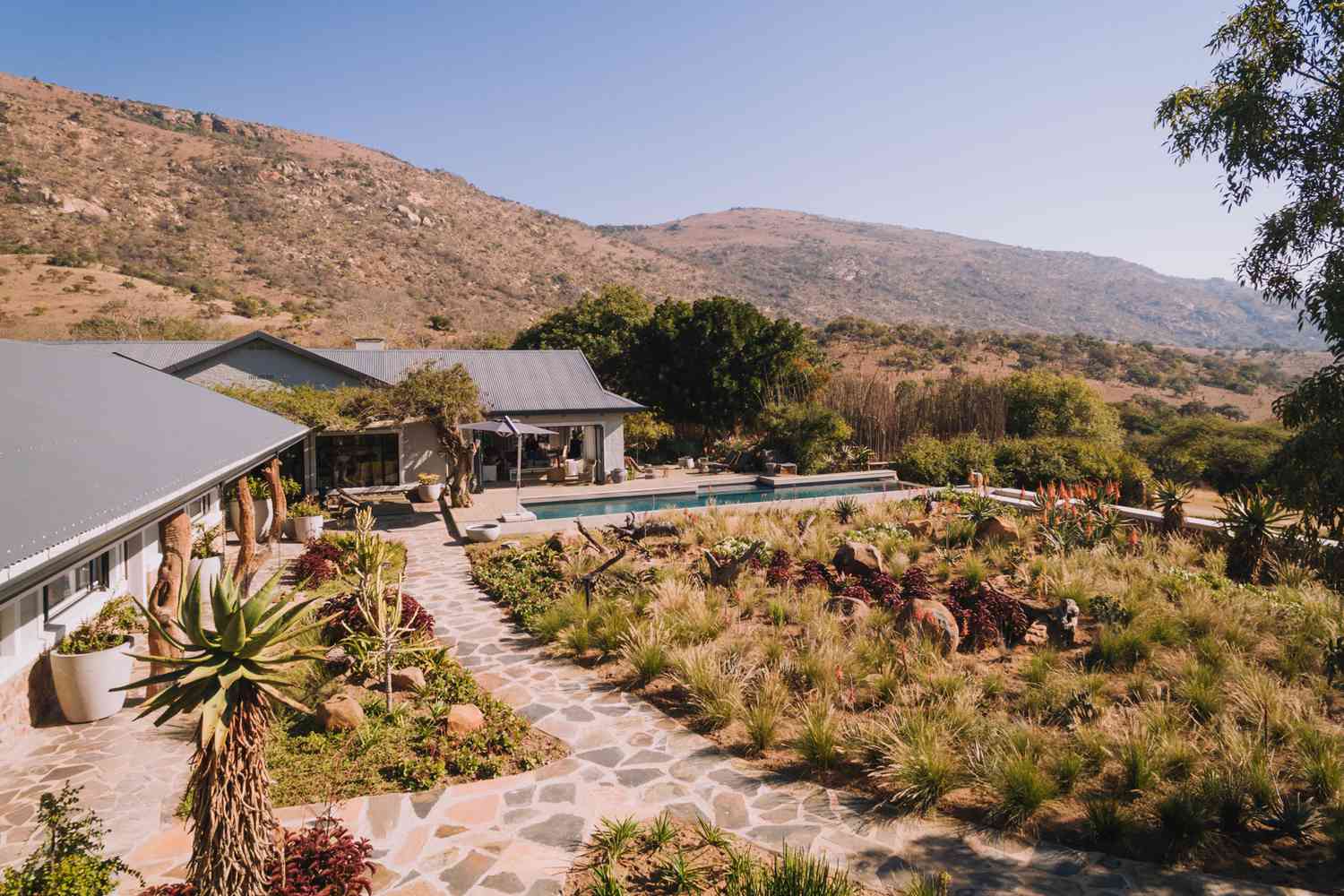
We’d spent more than an hour tracking the cheetah’s satellite signal, and when we finally caught up to the animal, she was wandering slowly through the tall, sun-bleached grass. Her belly swollen from devouring a kill, she flopped down in a patch of shade, seemingly relaxed in our presence. It was an encounter that isn’t likely to happen again, said Musa Mbatha, who was guiding me through this stretch of prairie. Two male lions had recently been reintroduced to the area and would soon be competing with the resident cheetahs for prey.
Dr Andrew Baxter/Courtesy of Babanango Game Reserve
The sighting, which I shared with Mbatha and two wildlife monitors, Bongani Khumalo and Tumelo Sathekge, represented a glimpse of the positive change taking place in KwaZulu-Natal, a South African province often known by its initials, KZN. I’d flown from Cape Town to the Babanango Game Reserve, in the lush hills of Zululand, to get a closer look at how local communities, global investors, and wildlife-tourism pros are collaborating to improve the ecology of this corner of the country.
The Emcakwini Community Trust, which manages 47,000 acres of land in KZN, came together with two other landholding community groups to create Babanango in 2017, along with German philanthropists Hellmuth and Barbara Weisser, who support the project with land and funds. The collective began reintroducing once-endemic animals in 2018, as well as remediating landscapes that had been given over to cattle pasture. Today, black rhinos, giraffes, lions, and cheetahs are beginning to thrive; shortly after my visit this May, elephants were brought back, too.
Courtesy of Sala Beach House
“This is one of the largest rewilding programs in South Africa in the last 20 years,” says Andy Baxter, Babanango’s chief operating officer.
The reserve is also becoming a destination for in-the-know safari-goers looking for their next thrill. “This is definitely not a first-time-in-Africa experience,” Baxter concedes. “It’s not always easy to see the animals—but that’s not our unique selling point.” Instead, guests get to see the early stages of the area’s conservation journey, joining the tracking team to monitor reintroduced wildlife, observing how the animals adapt to their new home, and meeting with researchers, whether out in the field or over coffee.
And while Babanango may not yet offer the abundant wildlife found in, say, Kruger National Park, there’s more to this place than just animals. Visitors can see millennia-old rock art created by the San people, while Iron Age kilns are regularly discovered all over the reserve. Guests can also explore more recent history, with day trips to battlefields of the 1879 Anglo-Zulu War.
New accommodations will be another draw to the area, which already has two comfortable mid-range properties, Babanango Valley Lodge and Babanango Zulu Rock Lodge. The more luxurious Babanango Madwaleni River Lodge just opened on the banks of the White Umfolozi River, with 12 tented suites, each of which has a private plunge pool and a deck overlooking the river.
There’s also welcome development along the coast of the Indian Ocean, which merits a night or two before or after a visit to Babanango. The most noteworthy addition is the seaside hotel Sala Beach House, which opened last year. I awoke there one morning to the sound of waves and yoga on the deck, and wrapped the day with a barbecue of crab, lobster, squid, and swordfish.
As blissful as I found the coast, it’s the memory of a night at Babanango Valley Lodge that has stuck with me. The staff had arranged a mobile gin-and-tonic bar overlooking the rolling hills. The blazing sun was dipping below the horizon, but it was still too early in the evening to hear those two lions calling. I knew they were out there, somewhere. Balance was slowly being restored — and I couldn’t wait to see what tomorrow might bring.
A version of this story first appeared in the September 2023 issue of Travel + Leisure under the headline “On the Rise.”
